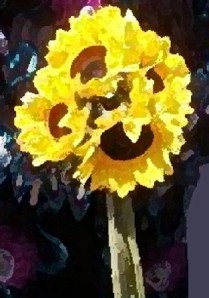On Tue, Jun 30, 2015 at 11:11 AM, Joan Cartwright wrote:
The “judge not” mantra is ripping me in two. This country’s system is based upon judgment of people who are locked up ad infinitum. I’m sick of the biblical JOKES played on the people. And we never believe anything until the white man says it. So, share this with the Non-believers.

The following response is from artist, author, educator, and mystic Dinizulu Gene Tinnie:
According to W.E.B. DuBois, if I may paraphrase, everything in America rips us in two (his famous “twoness” experienced by the American Negro), so it is not surprising that you, like most of us, feel divided regarding “Judge not…”
For one thing, just for starters, the words come out of the current English translation of the Bible, which raises enough questions on its own even before one translation led to another (like the game of “telephone” at a party, where each repetition brings about some change, and that’s using the same language!)
An elder sister/mentor/friend/colleague of mine, many decades ago, shared the concept that for us to survive in this society, we have to “Reverse everything” that our self-declared enemies say. If they say something is hot, it’s cold. If they say it’s bad, it’s good. Etc., etc. I questioned the “everything” part of that, but she said, yes, absolutely everything. As you see, I’ve never forgotten it because I have applied it so many times and gotten clarity from doing so.
That’s why I reject the whole “racial” paradigm that this society is built on because it is a contrivance that serves “them,” not us. There is a HUMAN race, and we go from there. At the same time, because we live amongst pathological criminals who consider our skin color to be a military uniform in a war that they have declared, I have no illusions as to how relevant that myth of “race” is to my survival.
And so it goes: The Twoness.
Regarding “Judge not…” my whole interpretation of that comes from reversing “their” ideology and tapping into our wisdom. Long, long before these people invaded our lives, we had the wisdom of knowing to “hate the deed, not the doer,” or, in this case, to judge the deed, not the doer. “Judge not,” to me refers to not making judgments like labeling or demonizing individuals or groups of people, because nobody is permanently good or bad or anything else. We can start with ourselves for ready proof of that simple truth. However, we do not deny the existence of deeds and actions that can be downright demonic and evil, causing destruction, pain, suffering, misery, divisiveness, confusion, and all the rest.
By not buying into the labels and convenient divisive categories of PEOPLE that our adversaries would want us to use, we are liberated from the deception and focused on what is real. Individuals, including ourselves, are held accountable second by second for our actions. No easy way out by thinking that belong to this or that group automatically makes us good or bad. A lot more challenging proposition, more demanding, and more in tune with life and therefore more rewarding.
Not easy. We rely on the wisdom of elders, like the old man in Alabama who said that one way to know the difference is to try not to do anything we are ashamed of while we are doing it. Another friend offers the notion that “in life we are always confronted with two choices, and the more difficult of the two is ALWAYS the correct one.”
The list goes on and I have probably shared a few of those gems with you in the past, along with those notions about not knowing what trauma or emergency causes the driver next to us to be driving crazy, or what preoccupation made someone not return our greeting that morning, and so forth.
I find the traditional knowledge systems — African, other Native — to be reliable sources to help us negotiate the “twoness” thing on our terms. When we learn from those traditions that there isn’t even any such thing as “us” or “them,” we are even more liberated from the madness — which is comprised of human actions, not necessarily tied to any particular human except at the time they are happening, and even less to any artificially contrived group.
I heard that the Human Genome Project showed the closest relationship between any two groups of people identified by their DNA was between Finnish Lapplanders and Australian Aborigines. Go figger. Even more to the point, 98.2% of human DNA is absolutely identical, so ALL of our perceptible differences are accounted for by 1.8% of who we are genetically.
WE are the ones who have to lead the march back to sanity.
See the poem below by Abby Lincoln.
Thanks for the Jordan Maxwell video. Very interesting and informative. Following his own advice, there’s quite a bit to question there, but he is one of many who are on the track of awakening us to think more and fear less. No surprise that he is a friend and disciple of Dick Gregory.
Peace & Blessings,
DGT
Where are the Afrikan Gods?
 By Abbey Lincoln
By Abbey Lincoln
Where are the Afrikan Gods?
Did they leave us on our journey over here?
Will we know them,
When they “suddenly” appear?
The ones “dismissed with
“voodoo”
“rock and roll”
“all that jazz”
“jungle” mumbo jumbo and
“razz ma tazz”
Where are the Afrikan Gods
Who will save us
From This
MISERY and SHAME
Where are the Afrikan Gods
Will we find them
When we “pray”
“In jesus name?”
Where are the Afrikan Gods
Who Lived and
Set Us Free
WE are the Afrikan Gods
You Know
WE ARE
YOU and ME







